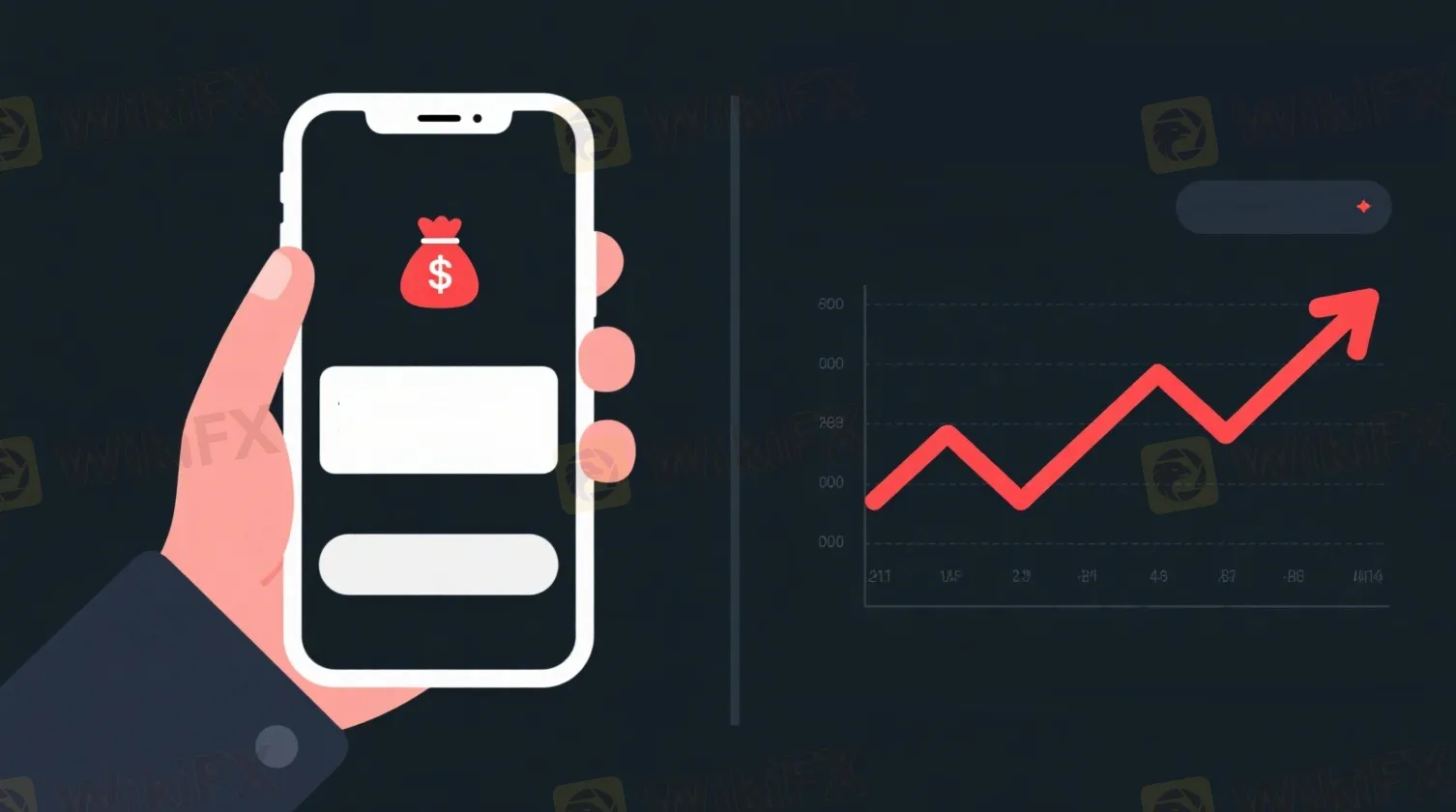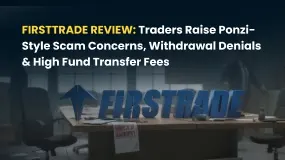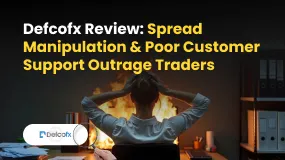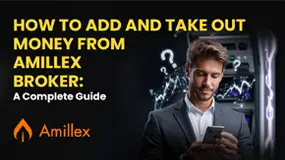简体中文
繁體中文
English
Pусский
日本語
ภาษาไทย
Tiếng Việt
Bahasa Indonesia
Español
हिन्दी
Filippiiniläinen
Français
Deutsch
Português
Türkçe
한국어
العربية
What is Free Margin in Forex? The Ultimate Guide for Traders
Abstract:Mastering the concept of what is free margin forex is about more than just avoiding disaster. It's about securing your trading freedom. A healthy, well-managed free margin gives you the confidence and flexibility to execute your strategy effectively, withstand market volatility, and stay in the game long enough to achieve your goals. It's the foundation upon which a sustainable trading career is built.
Beyond Your Account Balance
When you open your trading platform for the first time, you'll see several numbers on your screen. These include Balance, Equity, Margin, and Free Margin. Most new traders only pay attention to their account balance. But there's a much more important number you need to watch.
The most critical number for active trading is your free margin. Understanding this concept makes the difference between having a controlled trading plan and facing a scary margin call. Free margin shows your real-time financial power in the market. This guide will explain everything you need to know about it.

Understanding Account Metrics
To truly understand what is free margin in forex, you need to know its building blocks first. Your trading platform shows several key numbers that work together. Think of them as health indicators for your trading account. Getting these basics right makes everything else easier to understand.
Balance: Your Starting Point
Your account balance is the simplest number to understand. It shows how much money is in your account before you open any trades or after you close all trades. The balance only changes in three situations: when you add money, when you take money out, or when you close a trade and make or lose money. It's like a history record, not a live update of your account's current value while trades are running.
Used Margin: Your Deposit
Used Margin is the total amount of your money that your broker holds to keep your current trades open. This isn't a fee or cost. Think of it as a “security deposit.” For every trade you open, the broker requires you to put up a small part of the trade's total value. This becomes your used margin. This money is “locked up” while the trade is open and gets returned to you when you close the position.
Equity: The Real-Time Value
Equity gives you the most accurate picture of your account's current value. It equals your account balance plus any profits or losses from your open trades. If your open trades are making money, your equity will be higher than your balance. If they're losing money, your equity will be lower than your balance. The formula is simple:
Equity = Balance + Floating Profits/Losses
Since market prices always move, your equity changes constantly too. This real-time value determines how much trading capital you have available.
The Core Relationship: A Visual Anchor
To connect these concepts, remember this key equation:
Equity = Used Margin + Free Margin
This shows that your total real-time account value (Equity) always consists of money locked in trades (Used Margin) and money available for new trades (Free Margin).
The Definitive Calculation
Now that you understand the basic numbers, we can precisely define and calculate free margin. This is the central calculation that determines your ability to trade at any moment. Understanding this formula helps you monitor your account yourself, rather than just relying on what the platform shows you.
The Free Margin Formula
The formula to calculate free margin is straightforward:
Free Margin = Equity - Used Margin
Here's how it works. You take the real-time value of your entire account (Equity) and subtract the money already being used for your open trades (Used Margin). What's left is your free margin—the exact amount of money you can use for new positions. This answers the question, what does free margin mean in forex, in technical terms. It's your usable trading capital.
The Dynamic Nature
Free margin isn't a fixed number. Since equity changes with every market movement as your open positions gain or lose value, your free margin also changes constantly. Knowing what causes these changes is key to managing it well.
Here's what makes your free margin move:
Free Margin Increases When:
- Your open trades make profit. This increases your Equity, and since Used Margin stays the same, your Free Margin grows.
- You close a profitable trade. This increases your Balance and Equity, directly boosting your Free Margin.
- You close a losing trade. This releases the Used Margin back to your account. Unless the loss is bigger than the margin released, your Free Margin will usually increase.
- You add new money to your account. This directly increases your Balance and Equity, and therefore your Free Margin.
Free Margin Decreases When:
- Your open trades lose money. This reduces your Equity, which cuts into your Free Margin.
- You open a new position. When you start a new trade, some of your Free Margin becomes Used Margin, reducing the amount that's “free.”
Understanding what is free margin on forex platforms means watching this number as a live indicator of your trading power and risk level.
A Practical Trade Walkthrough
Theory is helpful, but seeing how free margin works during an actual trade makes it real. Let's go through a step-by-step example together. This will show you exactly how your account numbers change from when you open a trade to when you close it.

Scenario Setup
We'll start with clear initial conditions for our trading account. This gives us a clean starting point to see the changes clearly.
- Initial Account Balance: $5,000
- Broker Leverage: 100:1
- Required Margin Rate: 1% (This is the opposite of 100:1 leverage)
- Open Positions: None
At this starting point, with no trades open, the account looks like this:
- Equity = $5,000
- Used Margin = $0
- Free Margin = $5,000
Step 1: Opening a Position
We spot a potential buying opportunity in the EUR/USD pair and decide to open a position.
- Action: We open a long (buy) position of 0.5 lots on EUR/USD at a price of 1.0800.
First, we calculate the margin needed for this trade. A standard lot is 100,000 units of the base currency, so 0.5 lots is 50,000 units.
- Position Value: 50,000 EUR
- Required Margin Calculation: 1% of 50,000 = 500
- Used Margin: $500 (assuming EUR/USD exchange rate makes 500 EUR roughly equal to $500 for simplicity)
Right after we execute the trade, our account numbers change.
| Metric | Value | Explanation |
| Equity | $5,000 | Unchanged at first, since the trade has no profit or loss yet. |
| Used Margin | $500 | This is the security deposit held by the broker for our new 0.5 lot trade. |
| Free Margin | $4,500 | Calculated as $5,000 (Equity) - $500 (Used Margin). This is our remaining capital for new trades. |
Step 2: Trade Moves into Profit
The market moves in our favor, and EUR/USD price rises.
- Action: EUR/USD price moves up to 1.0850, a 50-pip gain from our entry point.
Now we calculate our floating profit. For a 0.5 lot position on EUR/USD, each pip is worth $5.
- Floating Profit: 50 pips * $5/pip = +$250
This unrealized profit directly affects our Equity and Free Margin.
| Metric | Value | Explanation |
| Equity | $5,250 | Our initial $5,000 Balance plus the $250 floating profit. |
| Used Margin | $500 | Unchanged, since the position size hasn't changed. |
| Free Margin | $4,750 | Calculated as $5,250 (Equity) - $500 (Used Margin). Our available capital has increased. |
Step 3: Trade Moves into a Loss
Markets are unpredictable, and the price reverses, falling below our entry point.
- Action: Price reverses down to 1.0780, which is a 20-pip loss from our 1.0800 entry.
We calculate the floating loss.
- Floating Loss: -20 pips * $5/pip = -$100
This loss now reduces our Equity and Free Margin.
| Metric | Value | Explanation |
| Equity | $4,900 | Our initial $5,000 Balance minus the $100 floating loss. |
| Used Margin | $500 | Still unchanged, since the position remains open. |
| Free Margin | $4,400 | Calculated as $4,900 (Equity) - $500 (Used Margin). Our buffer and available capital have shrunk. |
Step 4: Closing the Position
We decide to cut our losses and close the trade.
- Action: We close the 0.5 lot EUR/USD position at the current price of 1.0780.
The moment we close the trade, several things happen at once. The floating loss of -$100 becomes a real loss, and the $500 of Used Margin gets released back to the account.
| Metric | Value | Explanation |
| Balance | $4,900 | The initial $5,000 balance is now updated with the -$100 realized loss. |
| Equity | $4,900 | With no open trades, Equity equals the new Balance. |
| Used Margin | $0 | The position is closed, so the $500 security deposit is released. |
| Free Margin | $4,900 | With no used margin, all of our equity is now free margin. |
This complete cycle shows the living, changing nature of your account numbers and highlights the central role of free margin.
A Key Risk Management Tool
Understanding the calculation is only half the story. The real skill comes from recognizing why free margin is arguably the most important real-time risk management tool you have. Ignoring it is like driving a car without looking at the gas gauge. It controls your abilities, protects your money, and determines your account's survival.

It Controls New Trades
This is the most direct function of free margin. No matter how perfect a trade setup looks, if your free margin is at or below zero, your broker's platform will reject any new order to open a position. The system prevents you from taking on more risk than your account can handle. In this way, free margin acts as the ultimate gatekeeper for new opportunities. A healthy level of free margin ensures you have the flexibility to act when a good setup appears.
Your Buffer Against Losses
Think of free margin as the financial “cushion” for your account. When an open position moves against you, the floating losses are taken from your Equity. Since Free Margin = Equity - Used Margin, a drop in Equity directly translates to a drop in Free Margin. A large buffer means your account can handle the normal ups and downs of the market without immediate danger. A small buffer means a single bad price move could put your entire account at risk.
The Path to a Margin Call
The dreaded margin call is a direct result of shrinking free margin. A Margin Call is a warning from your broker saying that your account equity has fallen below the required margin level. This happens when your floating losses become so big that they eat up all of your free margin. When free margin hits zero, your account's total equity only equals your used margin, meaning you have no buffer left. This is the danger zone.
Understanding the Stop Out
If things get worse after a margin call, you hit the Stop Out Level. A Stop Out isn't a warning; it's an action. It's the point where your broker's system automatically starts closing your open positions, beginning with the most unprofitable one first. This is a forced closure designed to protect both you and the broker from the account balance going negative. The stop out triggers when your account's health, measured by the Margin Level, falls to a critical percentage set by the broker (like 50%). Low free margin is the first major step toward a stop out.
Free Margin vs. Margin Level
In forex trading, few concepts cause more confusion than the difference between Free Margin and Margin Level. They're closely related and both show account health, but they tell you different things. Clearing up this common confusion is essential for accurate risk assessment.
What is Margin Level?
The Margin Level is a ratio that compares your equity to your used margin, and it's always shown as a percentage. It's the main metric brokers use to determine if you're approaching a margin call or stop out.
The formula is:
Margin Level (%) = (Equity / Used Margin) * 100
A high margin level percentage is healthy, showing you have plenty of equity relative to the margin you're using. A low margin level is a warning sign.
Key Differences at a Glance
The best way to tell these two metrics apart is to compare them side-by-side. While both come from Equity and Used Margin, their purpose and the information they provide are different.
| Feature | Free Margin | Margin Level |
| Unit | Shown in your account's currency (like $4,400). | Shown as a percentage (like 980%). |
| Purpose | Shows how much available capital you have for new trades. | Shows the overall health and risk level of your account. |
| What it tells you | “How much more can I trade?” or “What is my loss buffer in dollars?” | “How close am I to a margin call or stop out?” |
| Key Threshold | Reaching zero means you cannot open any new trades. | Dropping to the broker's Margin Call Level (like 100%) triggers a warning. |
In short, you watch your Free Margin to manage your trading capacity. You watch your Margin Level to manage your account's survival.
5 Proactive Management Strategies
Knowing what free margin is and how it's calculated is the foundation. Applying that knowledge through disciplined, proactive strategies is what separates consistently profitable traders from those who lose their accounts. Here are five expert-level techniques to actively manage and optimize your free margin.
Strategy 1: The 1-2% Risk Rule
This is the foundation of professional risk management. Before entering any trade, determine a stop-loss level and adjust your position size so that if the stop-loss is hit, you'll only lose a small percentage of your total account equity—typically 1% to 2%. By doing this, you guarantee that any single loss will have a minimal impact on your equity, and therefore a minimal impact on your free margin. This prevents one bad decision from wiping out your trading buffer.
Strategy 2: Use Stop-Losses to Protect Margin
Think about the purpose of a stop-loss differently. It's not just a tool to limit your loss on a single trade. It's a mechanism to guarantee protection of your overall account health. When a trade goes against you, a stop-loss automatically closes the position, making the loss real but, importantly, releasing the Used Margin. This action preserves most of your Free Margin, ensuring you have capital available for the next, potentially better, trading opportunity.
Strategy 3: The Power of Partial Profit Taking
When a trade moves significantly in your favor, you don't have to choose between closing it completely or letting it run. A powerful technique is to close part of the position (like closing 0.25 lots of a 0.5 lot trade). This has a double benefit for your free margin. First, it makes part of the profit real, which increases your Balance and Equity. Second, it releases a corresponding part of the Used Margin. Both of these actions directly and significantly boost your free margin, reducing your risk on the current trade and increasing your flexibility for new ones.
Strategy 4: Correlated Pairs Awareness
A common mistake that quickly drains free margin is opening multiple, large positions on highly related currency pairs. For example, going long on EUR/USD, long on GBP/USD, and short on USD/CHF are all basically bets against the US dollar. If the USD suddenly strengthens, all three positions will move into a loss at the same time. This creates a multiplying negative effect on your equity, draining your free margin at an alarming rate. Always be aware of how your open positions are related and avoid over-exposing your account to a single currency's movement.
Strategy 5: Regular Account Health Checks
Just as you check your charts for trade setups, you must make checking your key account metrics part of your routine. Before you even look for a trade, and certainly before you place one, take five seconds to look at your Free Margin and Margin Level. This simple, proactive habit shifts your mindset from reacting to a low-margin warning in panic to proactively managing your risk exposure at all times. It ensures you're always trading from a position of financial awareness and strength.
Your Trading Freedom
Ultimately, understanding and managing free margin is about taking control. We've seen that it's far more than just a number on your screen; it's the lifeblood of your trading account. It's your usable capital, your primary defense against losses, and the resource that lets you seize new opportunities. By moving from passively watching to actively managing this metric, you fundamentally change your relationship with risk.
Key Takeaways Checklist
- ✅ Free Margin = Equity - Used Margin. It's your account's real-time value minus the capital held for open trades.
- ✅ It represents the exact amount of capital you can use to open new positions.
- ✅ It acts as your primary buffer, absorbing floating losses from your open trades.
- ✅ Low or negative free margin prevents new trades and is the direct path toward a margin call and potential stop out.
- ✅ Proactive management using strategies like the 1-2% rule, stop-losses, and awareness of correlations is essential for long-term survival and success.
The Final Word
Mastering the concept of what is free margin forex is about more than just avoiding disaster. It's about securing your trading freedom. A healthy, well-managed free margin gives you the confidence and flexibility to execute your strategy effectively, withstand market volatility, and stay in the game long enough to achieve your goals. It's the foundation upon which a sustainable trading career is built.
Disclaimer:
The views in this article only represent the author's personal views, and do not constitute investment advice on this platform. This platform does not guarantee the accuracy, completeness and timeliness of the information in the article, and will not be liable for any loss caused by the use of or reliance on the information in the article.
Read more

Firsttrade Review: Traders Raise Ponzi-Style Scam Concerns, Withdrawal Denials & More Issues
Have you lost all your capital while trading via Firsttrade? Does the US-based forex broker disallow you from withdrawing funds? Do you have to pay massive fees when transferring funds? Does your trade get affected because of frequent malfunction in the trading app? These have been haunting many traders at Firsttrade. Consequently, many of them have raised complaints online. In this Firsttrade review, we have shared such complaints. Keep reading to know about them.

Defcofx Review: Spread Manipulation & Poor Customer Support Outrage Traders
Does the poor customer support service leave you stunned when trading via Defcofx? Do you receive blunt, negative responses from the support team on several trading queries? Does the Saint Lucia-based forex broker pile on the losses for you by manipulating forex spread charges? In this Defcofx review, we have shared some complaints made against the broker. This will further answer your question: Is Defcofx real or fake?

How to Add and Take Out Money from Amillex Broker: A Complete Guide
Good money management is the foundation of successful trading. Learning how to make an Amillex Broker deposit and withdrawal is your first step toward trading with confidence. We know that for any trader, moving money must be safe, fast, and simple. This guide gives you a complete, step-by-step walkthrough for all amillex broker funding activities, so you can manage your account with total clarity. The whole process, from your first deposit to taking out profits, is made to be simple. You start by logging into your secure client area, picking a payment method that works for you, choosing the amount, and confirming the transaction. This guide will cover detailed deposit instructions, a full breakdown of withdrawal steps, a comparison of available payment methods, and a detailed look at the security measures protecting every transaction.

MH Markets Overview: Fees, Platforms, and Regulation
Choosing a forex broker is an important step for any trader. With so many options available, the main question is always: is this broker a safe and effective partner for my trading goals? This review is designed to answer that question about MH Markets. We will examine the key parts of their service—regulation status, trading costs, platform features, and overall user experience—to give you a clear, complete picture. Our goal is to give you the information you need to decide if MH Markets fits your strategy and risk comfort level.
WikiFX Broker
Latest News
WikiFX Elites Club Committee Concludes Voting! Inaugural Lineup Officially Announced
Fake Trading Platforms Are Spreading Fast Across Asia | How Investors Are Being Tricked
eToro CopyTrader Expands to U.S. Investors
Is MH Markets Safe or a Scam? Regulation and Fund Security Explained
How to Add and Take Out Money from Amillex Broker: A Complete Guide
FCA warning: These Firms are on the list
Ponzi Scheme Operator Sentenced to 14 Years in Western Australia
Dubai VARA Warns Against Vesta Investments
Don’t Get Scammed: A Roundup of Common Online Fraud Tactics in Forex
T4Trade broker Review 2025: Is T4Trade Regulated?
Currency Calculator



